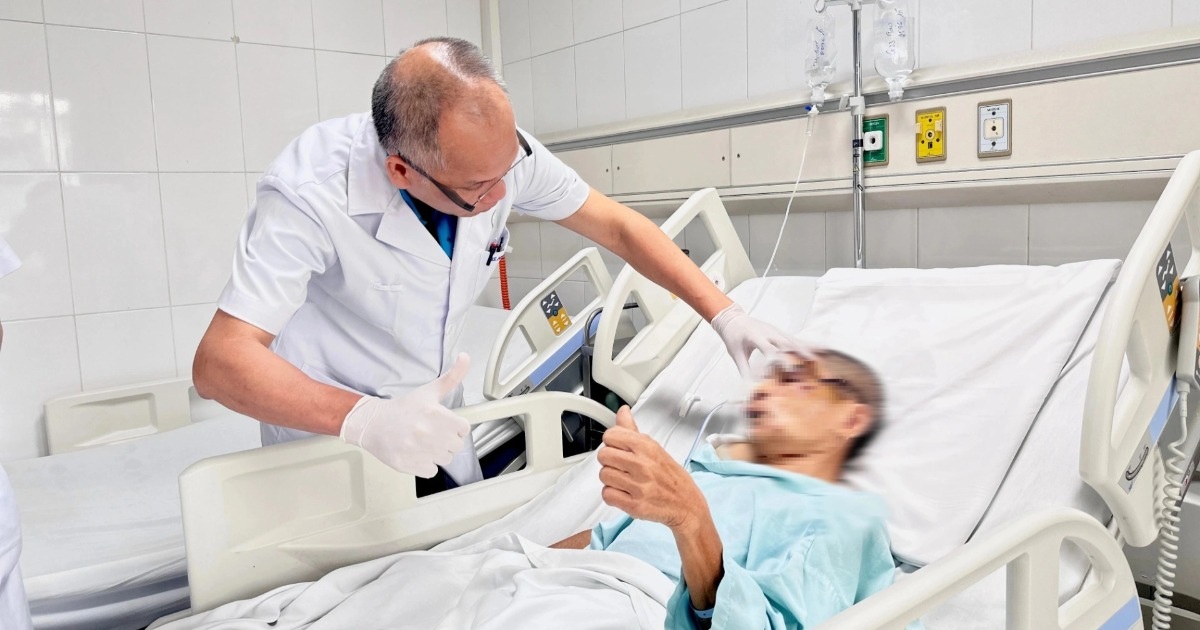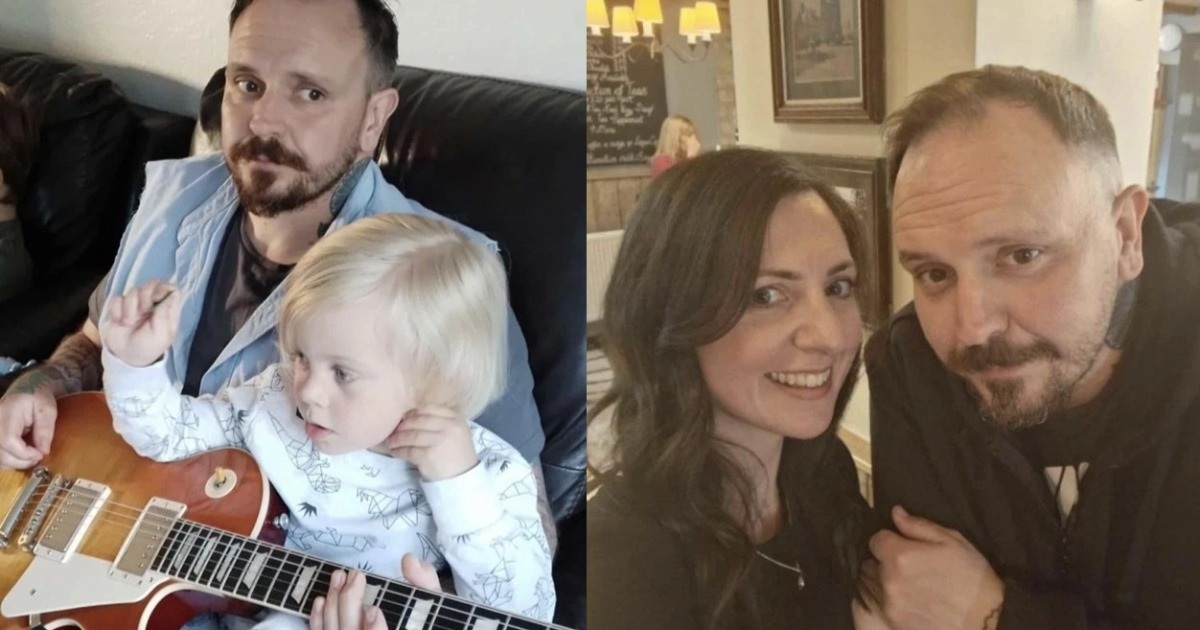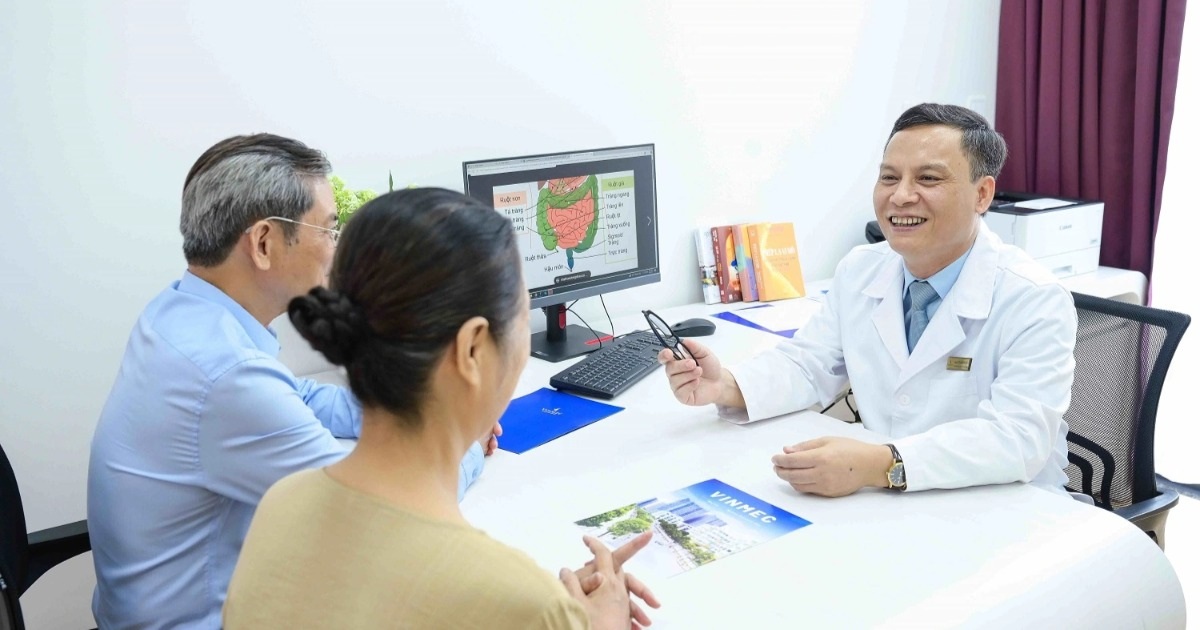On November 11, Viet Duc Hospital reported on a special case: a male patient miraculously saved his face after a terrifying fall into an elevator shaft.
Previously, Mr. N.M.T. (65 years old, Hanoi) was admitted to Viet Duc Hospital with complex maxillofacial injuries following a rare occupational accident.
While working, he unfortunately missed a step and fell into a freight elevator shaft, suffering a direct impact to his face against a metal component on the elevator’s roof. Crucially, the elevator continued to move, causing severe damage to his maxillofacial region.
Associate Professor Dr. Nguyen Hong Ha, Head of the Department of Maxillofacial, Plastic, and Aesthetic Surgery at Viet Duc Hospital, stated that the patient was hospitalized with a complex facial wound extending from his lip to his left temple, accompanied by a shattered lower jawbone and fractured left cheekbone, resulting in severe damage to the left side of his face.
 Patient's miraculously recovered face after complex facial reconstructive surgery
Patient's miraculously recovered face after complex facial reconstructive surgery
Upon evaluation, doctors noted that the patient’s face had injuries including a detached root of the facial nerve (cranial nerve VII), the parotid salivary gland duct, and the nasolacrimal duct. These injuries would lead to serious consequences for the patient’s function and quality of life if not treated promptly.
Following an urgent consultation involving multiple specialties, doctors quickly performed emergency surgery that same night to control bleeding, preserve function, and prevent long-term complications for the patient.
Master Doctor To Tuan Linh, from the Department of Maxillofacial, Plastic, and Aesthetic Surgery, stated that during the multi-hour operation, the team performed fixation of the upper and lower jawbones, debridement, and complex maxillofacial wound management to restore the anatomical structure of the facial components.
Notably, microsurgery was performed to re-suture the facial nerve (cranial nerve VII) directly at its root, close to its exit point from the mastoid bone, as well as reconnecting the parotid salivary gland duct and the left nasolacrimal duct. This helped preserve facial muscle movement, limit the risk of facial paralysis after injury, and prevent complications such as salivary duct obstruction/fistula and lacrimal duct obstruction after surgery.
“These injuries could lead to permanent facial paralysis, causing loss of emotional expression, difficulties with eating and speaking; purulent dacryocystitis (inflammation of the lacrimal sac) and long-term impact on the patient’s vision; salivary duct obstruction leading to inflammation, fistula, and abscess in the cheek area…”, Associate Professor Ha explained.
After the surgery, the patient was conscious and hemodynamically stable. Critical structures such as the facial nerve (cranial nerve VII), lacrimal gland, and salivary gland were preserved, opening up opportunities for comprehensive recovery in both motor function and aesthetics for the patient post-operation.
According to Associate Professor Dr. Nguyen Hong Ha, thanks to multidisciplinary coordination, doctors performed 5 simultaneous surgeries, including 3 microsurgeries, thereby not only saving the patient’s life but also preserving his face in the best possible condition.
“Even in advanced medical centers worldwide, it is rare for doctors to perform microsurgical re-anastomosis of all three tiny, matchstick-sized structures—the facial nerve, the salivary gland duct, and the tear duct—in a single stage under multi-trauma emergency conditions,” Associate Professor Ha stated.



